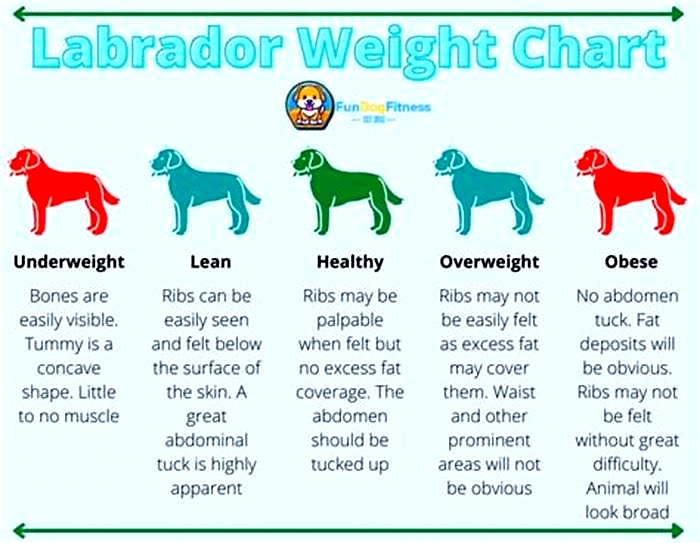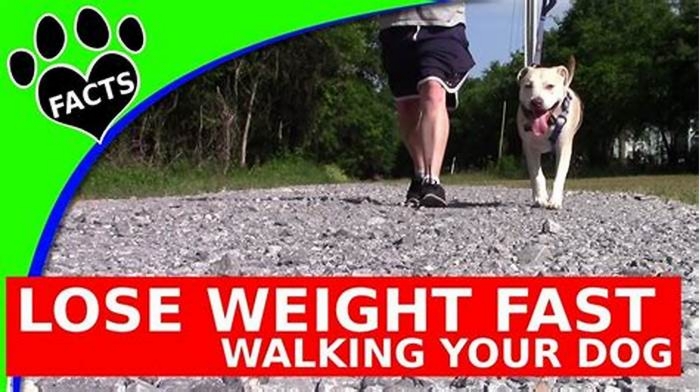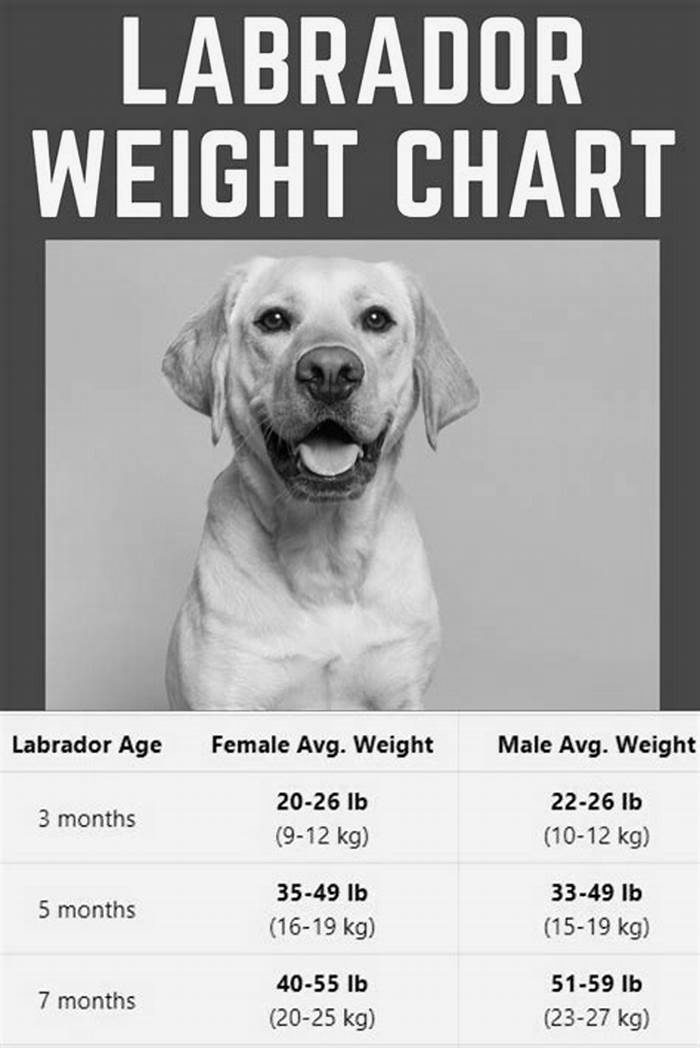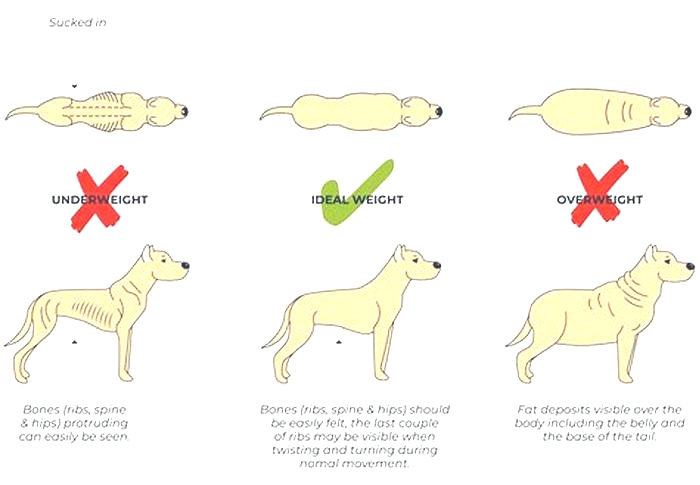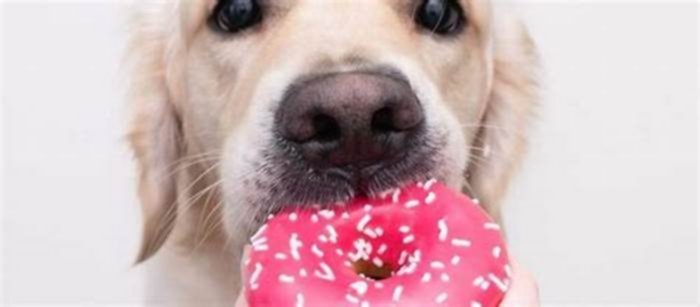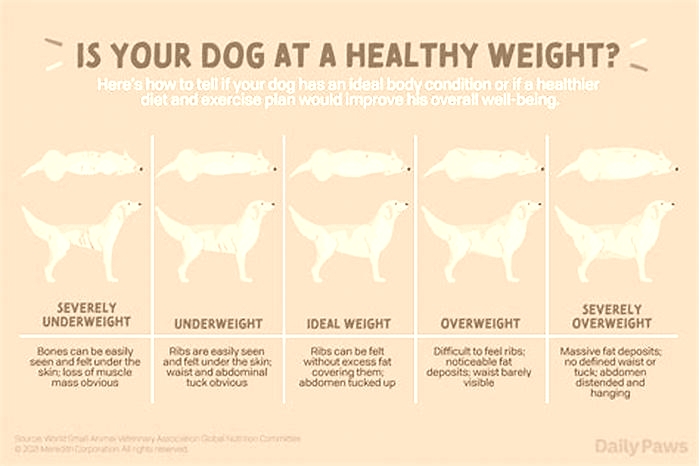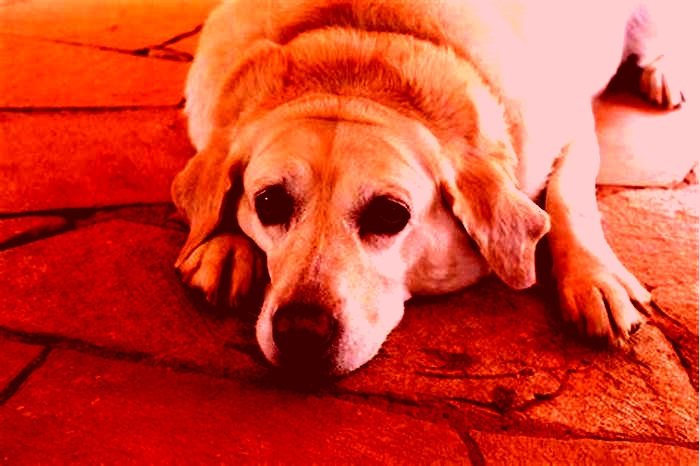Can Labradors lose weight

Effective Ways How to Help Labrador Lose Weight
Labradors are one of the most popular types of dogs in America. They are known for being friendly, energetic, and intelligent. However, what many people do not realize is that Labradors are also prone to obesity. A study by the Association for Pet Obesity Prevention found that over 50% of dogs are overweight or obese. Are you concerned about your dog? Do you want to know how to help a labrador lose weight?
While a little extra weight might not seem like a big deal, it can lead to several health problems, including joint pain, diabetes, and respiratory issues. So, if your Labrador is carrying around a few extra pounds, its essential to do something about it. Lets learn about some of the best ways to help your dog lose weight.
Labrador Obesity Issue
Whats behind your Labradors chubby cheeks? Below, we explore four common reasons your Lab might be carrying too many pounds.
Genetics
Several studies have shown that Labrador Retrievers have the highest obesity rates of all dog breeds. A defect in the POMC gene could cause this genetic predisposition. This mutation makes dogs more food motivated. Lab owners often reward their dogs with treats to encourage good behavior.
Labs are also known for being easy to train. Owners of overweight Labs should be extra vigilant about portion control. A lack of exercise is a major contributor to canine obesity. In addition, Labrador Retrievers are prone to joint damage and inflammation. Keeping a Labrador in proper shape requires a lot of discipline.
A new University of Cambridge study suggests that Labrador Retrievers are genetically predisposed to obesity. Researchers screened 310 Labrador Retrievers and found that one in four dogs had a gene mutation affecting appetite. It is the first gene linked to canine obesity.
Overfeeding
Labradors are known for their pleasing personality. Owners often overfeed their dogs, believing they are showing love and affection by providing treats and meals. But when it comes to Labrador weight loss, its important to remember the saying, Too much of a good thing is bad.
The POMC gene also affects the brains regulation of hunger. The gene also affects appetite-suppressing molecules that tell the body when it is full. Those molecules are supposed to turn off hunger signals after meals, but dogs with the mutation do not have that ability.
Researchers have also found that Labradors tend to be more food motivated than other dog breeds. They are always begging for food, regardless of how much they eat.
A Lack of Exercise
Labs were bred as working dogs, which means they have loads of energy to burn. If your dog isnt getting at least 30 minutes of exercise per day (preferably more), it may start gaining weight.
And since Labs are such people-pleasers, it can be easy to fall into the trap of thinking that just because they follow you around the house all day, theyre getting enough activity. But even if your dog seems content to lounge around with you on the couch, they still need dedicated time to run and play.
Medical Conditions
Underlying medical issues can also cause weight gain. Older Labradors may have hypothyroidism, a condition in which the bodys metabolism slows down. It can result in weight gain and lethargy.
Other medical conditions affecting Labrador Retrievers include Cushings disease, diabetes, and arthritis. If youve been feeding your dog a healthy diet and exercising regularly, but theyre still gaining weight, its vital to have them checked out by a veterinarian to rule out any possible health issues.
How Much Weight Should My Labrador Lose?

When it comes to weight loss, not all dogs are created equal. The amount of weight your Lab needs to lose will depend on their age, body type, and activity level. Check your dogs weight against a lab weight chart to see if they are approaching the borderline of being overweight or obese. Maintaining your dogs weight is crucial to keeping them healthy.
Male labs are larger at 29-36kg, whereas adult lab females normally weigh between 25 and 32kg. Between the ages of one and five, labs have a propensity to gain two to three pounds annually, which may result in obesity by the time your Lab reaches middle life. Your Lab is obese if she weighs close to 100 pounds.
In general, most adult Labradors should aim to lose 5-10% of their body weight. For example, if your dog weighs 30kg, it should aim to lose between 1.5 and 3kg.
Its also important to understand that your Lab may not reach its ideal weight overnight, and it could take several weeks or months to slim down. However, with a consistent diet and exercise plan, you can help your Labrador reach their optimal weight safely and healthily.
If youre unsure if your Lab could afford to lose a few pounds, there are a few simple ways to tell.
- Take a look at their body from above. You should be able to see their waistline and all four ribs without having to press in. If you cant, they may be carrying too much weight.
- Another way to check is by feeling their ribs. You should be able to feel each one without having to press too hard. If you cant, they might be overweight.
- Take a look at their body from the side. They should have an hourglass shape when viewed from this angle. If they look more like a rectangle, they may need to lose some weight.
How to Help Labrador Lose Weight

Whether youre looking for ways to lose weight on your own or trying to help your Labrador get in shape, there are a few essential things to know. Before starting a weight loss plan, make sure youve checked with your veterinarian for any preventive measures. You may also want to consider using a prescription diet to help your dog fight certain diseases associated with obesity.
Give your dog more food without changing the calories.
Adding more food to your dogs diet without changing the calories can help your dog lose weight. Often, overweight dogs have difficulty losing weight, but following a few simple guidelines can help them lose weight without changing their diet.
- First, calculate your dogs daily caloric intake. Most dogs require roughly 10 to 15 percent more calories than their recommended daily calorie intake. If you give your dog a treat, ensure it doesnt add more than a few calories to its daily calorie intake.
- You may also need to increase the amount of exercise that your dog is getting.
- When you increase your dogs calories, do it gradually. Adding too much too soon can lead to a rebound weight gain. In addition, your dog may not feel full after consuming all his or her calories.
- It is also important to remember that weight loss programs take time to work. Small changes in your dogs food intake and activity can significantly affect your dogs weight. Keeping track of changes can help you learn what works best for your dog.
Smart treat.
Many dog owners suffer significantly from the guilt they experience when they deny their pets treats when they are on a weight loss regimen. It is reasonable since we all like spoiling our animals, and we all know how much Labradors adore goodies.
There are many wonderful methods to give your dog a treat without increasing its calorie intake. You may manage how much food your Lab consumes by calculating their daily food ratio. You can still offer your dog a reward without giving them extra calories by using a little portion of this amount as a treat throughout the day.
Remember that the dog only values receiving something from the master. Even for food-oriented dogs like Labradors, its not always about the reward itself!
Feed your Lab high-fiber food.
High-fiber foods are low in fat, but they can help your dog feel full longer. High-fiber foods can help support healthy digestion and may even reduce the risk of specific health problems.
Look for foods that contain whole grains, such as brown rice, oats, barley, quinoa, or millet. You can also add vegetables, such as broccoli, carrots, or celery. Adding fresh fruit is another good option.
Make sure you stick to the recommended portion sizes for your dogs breed and weight. If your Lab needs more calories than usual, talk to your vet about the appropriate amount.
Get rid of any constant food sources.
If your Labrador has access to food all the time, they may not be getting enough exercise to burn off the calories. To help prevent this, remove any constant food sources and ensure you are providing adequate amounts of exercise.
Another way to keep your Lab away from food is by offering healthy snacks throughout the day. You can offer them fruits and vegetables, low-fat treats, or even just a few pieces of kibble as rewards for completing activities.
Visit the vet before starting a weight loss plan.
Getting your dogs yearly physical before starting a weight loss plan can help ensure your pet stays healthy. A wellness visit is perfect for discussing your dogs physical well-being and determining if it needs special medical attention. A vet can also provide information on weight loss options and can answer any questions you may have.
Preventing debilitating diseases is one of the best ways to keep your dog healthy. An annual wellness visit will help you detect issues before they become larger problems. The vet can also advise you on vaccinations, parasite control, and skin and coat care. A wellness exam can also save you money in the long run.
A veterinarian may also recommend a weight loss regimen that includes exercise, monitoring your dogs weight, and a diet change. Depending on your dogs condition, you may also need to modify the exercise regimen to suit your dogs needs.
Several medical problems contribute to your pets weight gain, and a wellness visit is the best way to determine if your pet has one. Some of these problems include hypothyroidism, hyperadrenocorticism, and Cushings disease. Experts can easily diagnose these conditions by doing bloodwork.
The wellness procedure is also the best way to determine if your dog is suffering from a medical condition. Many prescription medications depending on your dogs weight, and a wellness exam can help you catch it in its earliest stages.
Give your Labrador plenty of exercise routines.
Getting your dog to exercise is integral to taking care of him. Not only does it improve his physical health, but it can also enhance his mental well-being. Having a dog that is in shape is less likely to suffer from obesity.
Your dog will enjoy the company of other dogs, and an agility course can give him a great deal of exercise while allowing you to bond. An obstacle course might include hurdles, tunnels, and seesaws.
For the best results, make sure you take plenty of water along with you. Also, make sure your dog is wearing a good-quality leash. You should also give your dog a break when you are done exercising. Taking your dog for a romp at the dog park is a great way to burn off some of the energy he may have built up during the exercise.
Taking a dog for a long walk is also an excellent way to help it maintain its weight. It is good exercise for dogs with arthritis, as long as you do not take on too much mileage in one day.
Best Exercise and Training Routines for Your Labrador to Lose Weight
Getting your Labrador involved in training exercises is a great way to keep him healthy and happy. The health benefits of regular exercise are obvious, but it can also prevent problems such as obesity. Exercise sessions should be tailored to your Labradors age and health.
Here are some of the best exercises and training routines for Labs.
Frisbee
Whether you are going on a trip to the beach or simply enjoying your weekend at home, a Frisbee is an excellent toy to keep your dog physically and mentally fit. However, training your dog to catch the disc can be a challenge. There are a few things you should know before you begin.
The first thing to remember is to only throw the Frisbee a short distance. You want to avoid hurting your dog. If you do, it can lead to mistrust. Your dog may think that the Frisbee is a bad toy.
You should also ensure that you have plenty of space to supervise your dogs activities. If your dog has a history of sprained ankles, you may want to avoid disc-game training. If your dog is small, it may also be a good idea to avoid too hard Frisbees.
When playing Frisbee with your dog, make sure that you choose a soft-mesh flying disk. These discs wont cause as much damage to your dog as hard disks. You can also select a disc with a soft, rounded arc.
You need to start out slowly to train your dog to catch the Frisbee. Start with a small disk and throw it a few feet to your dogs left. As your dog gains confidence, you can increase the distance. When your dog catches the Frisbee, you should praise and reward it for a successful catch.
Walking outdoors
Taking your Lab for a walk outdoors can be a great way to get your dog moving. The more exercise your dog gets, the healthier and happier he will be. Its also a great way to socialize your dog with other dogs. It helps your dog learn social skills and confidence.
Labs are naturally energetic dogs. But they also need a bit of structured exercise to keep their joints and muscles healthy.
However, not all dogs enjoy structured exercise. Some will tire easily, and others will need a little more TLC. For example, a pulling dog might require a head halter to break the habit.
A vet should evaluate a dog that is overweight or has a bad case of arthritis before taking a long walk. At the same time, you should start slowly and gradually increasing your walks intensity.
Also, ensure that your Lab has plenty of water available during the walk. And remember to give him plenty of breaks. Walking in hot weather can harm his health if not done properly.
Agility Course
Agility courses are a great way to get your Lab moving. While it may seem intimidating, you dont need any special equipment or skills to set up an agility course for your dog.
Plyometrics are a vital part of any dog agility training program. These exercises focus on the speed of different movements to develop explosive muscle power. These exercises also help develop a dogs coordination. A good plyometric program should incorporate several elements, including jumping, landing mechanics, and takeoff.
Plyometrics are best used in combination with other conditioning exercises. Also, the best program will consider your dogs unique characteristics. A trainer can help develop a program tailored to your dogs needs.
Plyometrics are best suited for dogs at least 12-18 months old. These exercises should be done at least two to three times a week.
Another exercise that is good for your dogs agility is jumping. Its fun for both the dog and the owner. You can practice jumping using a broomstick or other small object. Remember that its best to do this on a smooth surface, not a slippery one.
Some people even build mock agility tunnels with a large open cardboard box. Others make hurdles out of towels or pillows.
Other exercises ideal for your dogs agility includes throwing a ball, fetching a toy, or running around the yard. These exercises will not only improve your dogs coordination but will also increase their confidence.
Swimming
Swimming is an excellent activity to do with your Lab. These exercise helps build physical and mental stamina while increasing the range of motion in the joints. It also helps reduce stress, which is essential for any dogs overall health.
Its best to start swimming slowly and gradually build up your dogs endurance level. You can go to a pool, creek, or lake. Make sure to always keep your dog on a leash in case of any unexpected events.
Its best to start with shallow water and gradually increase the depth as your dog gets more comfortable. It will help prevent any post-swimming aches and pains due to overexertion.
Finally, dont forget to praise your dog after a successful swim. Your pup will love the attention, and it will help your pet build self-confidence. It could be in the form of treats or verbal affirmations. Your Lab will appreciate any type of reward for his efforts!
Frequently Asked Questions
What dog food is ideal for weight loss?
High-protein, low-fat dog foods are ideal for weight loss. Look for a formula specifically designed to be nutritionally balanced and made with quality ingredients. Avoid any food with fillers or artificial preservatives.
What is the fastest way for a Labrador to lose weight?
The fastest and most effective way for a Labrador to lose weight is by combining exercise with a nutritionally balanced diet. Regular walks, swimming, and agility courses are all great activities that will help your Lab burn calories. Also, avoiding high-calorie treats or snacks can help speed up the weight loss process.
How long does it take for labs to lose weight?
Labradors can take anywhere from six to eight months to reach their ideal weight. It depends on the individuals current size, health condition, and diet and exercise routine. You should consult a veterinarian to determine the best action plan for your Labradors weight loss journey.
What are some common mistakes when exercising a Labrador?
Some common mistakes when exercising a Labrador include not allowing the dog to warm up before exercise. Over-exercising them can also lead to heat exhaustion and not providing them with enough rest in between workouts. Its essential to allow your Lab enough time to rest and recover after each exercise session.
How many times a day should a Labrador eat?
Labradors should eat twice a day. Ensure there is 12 hours interval between each meal. A portion size of to cups of dry food per meal is typically sufficient, depending on your dogs needs and activity level. Feeding them smaller meals more frequently throughout the day can also be beneficial.
Final Words
Labradors are wonderful, loyal companions that need attention and care. Taking the time to give them a healthy diet and exercise plan will help them maintain their ideal weight and prevent any health issues. The key is to create an enjoyable routine for you both, so your Lab will stay motivated and look forward to each session. With your help, their weight loss journey will be a successful one!



